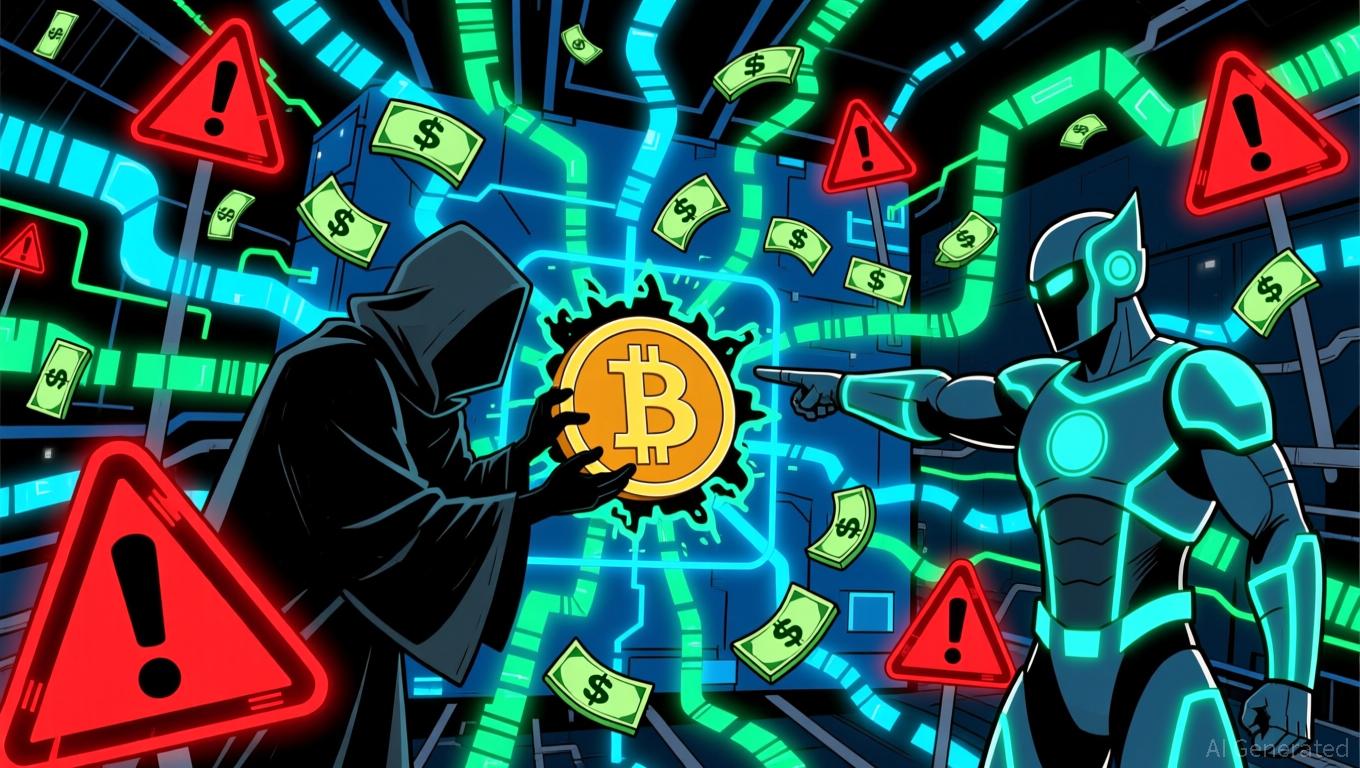The Growing Fascination with Hyperliquid: Is This the Dawn of a New Age in On-Chain Trading?
- Hyperliquid dominates 2025 decentralized derivatives trading with $303B volume, driven by HIP-3 protocol and partnerships with RedStone/21Shares. - Competitive risks emerge as rivals like Aster challenge Hyperliquid's market share through liquidity incentives and 24-hour trading spikes. - Whale activity and leveraged trading risks highlight Hyperliquid's BLP testnet innovations in on-chain lending and risk management solutions. - Institutional adoption accelerates via 21Shares' ETF application, while TVL
Market Trends: Trading Volume, Competition, and Risk Factors
In October 2025, Hyperliquid achieved a milestone with $303 billion in trading volume, surpassing competitors such as Lighter ($272 billion) and
A notable market event occurred in November when a

On-Chain Growth: HIP-3 and the Move Toward Permissionless Markets
The most significant change for Hyperliquid in 2025 is the rollout of HIP-3, which shifts the platform from centralized oversight to a permissionless system for creating markets. With HIP-3, anyone can launch perpetual markets by staking HYPE tokens and setting parameters such as collateral, leverage, and oracle selection. To maintain security, poorly configured markets are subject to slashing, while RedStone’s HyperStone oracle delivers rapid price updates—processing over 103 million data points during testnet phases, according to a
This evolution not only opens up market creation to a wider audience but also makes Hyperliquid more attractive to developers and institutions. By minimizing dependence on centralized permissions, HIP-3 supports the broader DeFi movement toward modularity and user empowerment. The integration of HyperStone further strengthens the platform’s technical backbone, potentially boosting demand for RedStone’s
Institutional Momentum and Regulatory Developments
Interest from institutions is on the rise, illustrated by 21Shares’ application on October 29 for a Hyperliquid ETF, to be managed by
Yet, obstacles remain. Weekly trading fees saw a steep decline in October, falling from $34.86 million to $11.84 million, indicating increased caution among traders during uncertain times, as noted in a
Risks and Future Outlook
Despite Hyperliquid’s strong progress, several risks persist. Heavy reliance on HYPE token staking could make the platform vulnerable to liquidity disruptions if token values swing sharply. The effectiveness of HIP-3 also depends on active participation from market creators and the dependability of oracles like HyperStone. Additionally, as products like the 21Shares ETF gain attention, regulatory scrutiny of decentralized derivatives could become a significant hurdle.
Conclusion: Entering a New Phase?
The advancements made by Hyperliquid in 2025 point to a more mature ecosystem that is bridging the gap between traditional finance and decentralized platforms. By merging high trading volumes, robust infrastructure, and open innovation, Hyperliquid is reshaping the landscape of on-chain finance. However, its future success will hinge on its ability to manage volatility, uphold security, and meet the rising demand for decentralized financial solutions. For investors, Hyperliquid stands as both a promising opportunity and a reflection of the changing dynamics within the crypto sector.
Disclaimer: The content of this article solely reflects the author's opinion and does not represent the platform in any capacity. This article is not intended to serve as a reference for making investment decisions.
You may also like
Ireland Issues Landmark Fine for Crypto AML, Indicating Tighter Regulatory Scrutiny
- Ireland's Central Bank fined Coinbase Europe €21.5M for systemic AML/CFT failures between 2021-2025, marking its first crypto disciplinary action. - Technical errors allowed 31% of Coinbase's €176B transactions to bypass monitoring, exposing risks for money laundering and cybercrime. - The 30% reduced penalty under a settlement program highlights Europe's intensified crypto regulation, with Coinbase now enhancing monitoring protocols. - Regulators emphasized the need for real-time AML controls in crypto,

Bitcoin Updates: Square's Expansion into Bitcoin Threatens U.S. Bancorp's Leading Position in Payments
- Square (Block Inc.) expanded Bitcoin payments to 4M+ merchants via Lightning Network, enabling instant, low-cost QR code transactions. - Zero-fee Bitcoin processing until 2026 (1% thereafter) challenges traditional 2.5%-3.5% credit card rates, boosting small business adoption. - Strategic move counters PayPal/U.S. Bancorp, leveraging Square's 48 NPS loyalty and 12% YoY GPV growth to dominate digital payments.

Breaking: Michael Saylor’s Strategy Expands Bitcoin Holdings to 641,692 BTC
HBAR price surges as Hedera joins Google BigQuery for transparent data access
